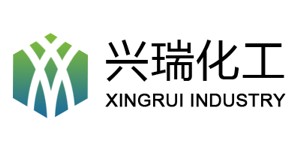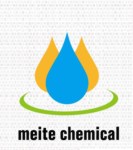|
|
|

|
Suppliers for
Sebacic acid
|
Properties | | CAS |
111-20-6 | | Formula |
C10H18O4 | | EINECS |
203-845-5 |

|
|
35 Registered suppliers
| Appearance & Physical State | white powder
| | Density | 1.21
| | Melting Point | 131-134ēC
| | Boiling Point | 294.4ēC (100 mmHg)
| | Flash Point | 220ēC
| | Refractive Index | 1.422
| | Water Solubility | 1 g/L (20 ēC)
| | Stability | Stable. Combustible. Incompatible with strong oxidizing agents, bases, reducing agents.
| | Storage Condition | Keep container closed when not in use. Store in a cool, dry, well-ventilated area away from incompatible substances. No special precautions indicated.
| | Vapor Pressure | 1 mm Hg ( 183 °C) |
Molecular Weight: 202.2g/mol
Molecular Weight: 202.2g/mol
Molecular Formula : C10H18O4
Molecular Formula : C10H18O4
Molecular Formula : C10H18O4
| Appearance | White crystalline powder
| | Purity%(m/m) | 99.5min
| | Ammonia Solution Color Pt-co | 5max
| | Moisture%(m/m) | 0.2max
| | Ash(mg/kg) | 0.03max
| | Color(APHA) | 15max
| | Melting Point (°C) | 131-134.5 |
| Appearance | White crystalline powder
| | Purity%(m/m) | 99.5min
| | Ammonia Solution Color Pt-co | 5max
| | Moisture%(m/m) | 0.2max
| | Ash(mg/kg) | 0.03max
| | Color(APHA) | 15max
| | Melting Point (°C) | 131-134.5 |
| Appearance | White crystalline powder
| | Purity%(m/m) | 99.5min
| | Ammonia Solution Color Pt-co | 5max
| | Moisture%(m/m) | 0.2max
| | Ash(mg/kg) | 0.03max
| | Color(APHA) | 15max
| | Melting Point (°C) | 131-134.5 |
| Appearance | White crystalline powder
| | Purity%(m/m) | 99.5min
| | Ammonia Solution Color Pt-co | 5max
| | Moisture%(m/m) | 0.2max
| | Ash(mg/kg) | 0.03max
| | Color(APHA) | 15max
| | Melting Point (°C) | 131-134.5 |
| Appearance | White crystalline powder
| | Purity%(m/m) | 99.5min
| | Ammonia Solution Color Pt-co | 5max
| | Moisture%(m/m) | 0.2max
| | Ash(mg/kg) | 0.03max
| | Color(APHA) | 15max
| | Melting Point (°C) | 131-134.5 |
Molecular Formula: C10H18O4
Molecular Formula: C10H18O4
Molecular Formula: C10H18O4
Molecular Formula: C10H18O4
Molecular Formula: C10H18O4
Molecular Formula: C10H18O4
Molecular Formula: C10H18O4
Molecular Formula: C10H18O4
Molecular Formula: C10H18O4
Molecular Formula: C10H18O4
Molecular Formula: C10H18O4
Appearance White powder
| Purity 99.5% min
| Ash content 0.03% max
| Moisture 0.3% max
| Color (APHA) 15 max
| | Melting point 131.0-134.5ēC |
Appearance White powder
| Purity 99.5% min
| Ash content 0.03% max
| Moisture 0.3% max
| Color (APHA) 15 max
| | Melting point 131.0-134.5ēC |
Appearance White powder
| Purity 99.5% min
| Ash content 0.03% max
| Moisture 0.3% max
| Color (APHA) 15 max
| | Melting point 131.0-134.5ēC |
Appearance White powder
| Purity 99.5% min
| Ash content 0.03% max
| Moisture 0.3% max
| Color (APHA) 15 max
| | Melting point 131.0-134.5ēC |
Appearance White powder
| Purity 99.5% min
| Ash content 0.03% max
| Moisture 0.3% max
| Color (APHA) 15 max
| | Melting point 131.0-134.5ēC |
Appearance White powder
| Purity 99.5% min
| Ash content 0.03% max
| Moisture 0.3% max
| Color (APHA) 15 max
| | Melting point 131.0-134.5ēC |
Melting point: 133-137 ° C (lit.)
Boiling Point :294.5 ° C 100 mm Hg (lit.)
Density :1.21
Vapor pressure :1 mm Hg (183 ° C)
Refractive index :1.422
Flash point : 220 ° C
Solubility ethanol: 100 mg / mL
Water solubility :1 g / L (20 ēC)
Merck: 14,8415
BRN: 1210591
Stability:Stable. Combustible. Incompatible with strong oxidizing agents, bases, reducing agents.
Storage:Stored in a cool ventilated place, fire and moisture. And strong acid, acid anhydride and strong alkali, strong oxide stored separately. Keep away from heat sources, according to the provisions of flammable storage and transportation.
Chemical properties: white flake crystal. Slightly soluble in water, soluble in alcohol and ether.
Usage:
1. Used as cold plasticizers, resins and nylon and other raw materials
2. Used as analytical reagent
3. Mainly used sebacic acid ester plasticizer and nylon mold resin raw materials, can also be used as raw materials for high temperature lubricants. The main ester products are methyl ester, isopropyl ester, butyl ester, octyl ester, nonyl ester and phenyl methyl ester, the usual ester is dibutyl sebacate and dioctyl sebacate. Sebacic acid plasticizer can be widely used in PVC, alkyd resin, polyester resin and polyamide molding resin, because of its low toxicity and high temperature performance, it is often used for some special purpose resin. Nylon molded resin produced with sebacic acid has a high toughness and low moisture absorption, but also processed into many special-purpose products. Sebacic acid or rubber softeners, surfactants, coatings and spices raw materials.
4. Gas Chromatography tailing agent, separation and analysis of fatty acids can be used for precipitation and quantitative determination of thorium, and thorium and cerium and other rare earth element cable separation. Plasticizers, synthetic resins and synthetic fibers.
5. For the separation and analysis of fatty acids; for gas chromatography tail reduction agent; Used as plasticizers
6.Automotive applications such as antifreeze
Details:
Sebacic acid is widely used, mainly used to make sebacic acid esters, esters widely used, such as dibutyl sebacate, sebacate dioctyl sebacate, di-isooctyl sebacate. These esters can be used for plastic, cold rubber plasticizer, can also be used to produce polyamide, polyurethane, alkyd resin, synthetic lubricants, lubricants additives and spices, paints, cosmetics and so on. Also can be used for the production of nylon 1010, nylon 910, nylon 810, nylon 610, nylon 9 and high temperature lubricating oil raw materials diethylhexyl ester. It is also used in the production of alkyd resins (used as surface coatings, plasticized nitrocellulose and urea resin varnishes) and as plasticizers, softeners and solvents for polyurethane, cellulose, vinyl and elastomers. raw material.
Brief manufacture process:
The castor oil as raw material, the ricinoleic acid which is separated from caustic soda in the pressurized and 280 ~ 300 ° C under alkaline melting, heating reaction 10h, can be obtained sodium salt of sebaceous acid, and by-product 2- Octanol. The sodium salt dissolved in water, adding sulfuric acid and decolorization, the solution cooling, precipitation of sebaceous acid, washed with cold water, and finally recrystallization.
Melting point: 133-137 ° C (lit.)
Boiling Point :294.5 ° C 100 mm Hg (lit.)
Density :1.21
Vapor pressure :1 mm Hg (183 ° C)
Refractive index :1.422
Flash point : 220 ° C
Solubility ethanol: 100 mg / mL
Water solubility :1 g / L (20 ēC)
Merck: 14,8415
BRN: 1210591
Stability:Stable. Combustible. Incompatible with strong oxidizing agents, bases, reducing agents.
Storage:Stored in a cool ventilated place, fire and moisture. And strong acid, acid anhydride and strong alkali, strong oxide stored separately. Keep away from heat sources, according to the provisions of flammable storage and transportation.
Chemical properties: white flake crystal. Slightly soluble in water, soluble in alcohol and ether.
Usage:
1. Used as cold plasticizers, resins and nylon and other raw materials
2. Used as analytical reagent
3. Mainly used sebacic acid ester plasticizer and nylon mold resin raw materials, can also be used as raw materials for high temperature lubricants. The main ester products are methyl ester, isopropyl ester, butyl ester, octyl ester, nonyl ester and phenyl methyl ester, the usual ester is dibutyl sebacate and dioctyl sebacate. Sebacic acid plasticizer can be widely used in PVC, alkyd resin, polyester resin and polyamide molding resin, because of its low toxicity and high temperature performance, it is often used for some special purpose resin. Nylon molded resin produced with sebacic acid has a high toughness and low moisture absorption, but also processed into many special-purpose products. Sebacic acid or rubber softeners, surfactants, coatings and spices raw materials.
4. Gas Chromatography tailing agent, separation and analysis of fatty acids can be used for precipitation and quantitative determination of thorium, and thorium and cerium and other rare earth element cable separation. Plasticizers, synthetic resins and synthetic fibers.
5. For the separation and analysis of fatty acids; for gas chromatography tail reduction agent; Used as plasticizers
6.Automotive applications such as antifreeze
Details:
Sebacic acid is widely used, mainly used to make sebacic acid esters, esters widely used, such as dibutyl sebacate, sebacate dioctyl sebacate, di-isooctyl sebacate. These esters can be used for plastic, cold rubber plasticizer, can also be used to produce polyamide, polyurethane, alkyd resin, synthetic lubricants, lubricants additives and spices, paints, cosmetics and so on. Also can be used for the production of nylon 1010, nylon 910, nylon 810, nylon 610, nylon 9 and high temperature lubricating oil raw materials diethylhexyl ester. It is also used in the production of alkyd resins (used as surface coatings, plasticized nitrocellulose and urea resin varnishes) and as plasticizers, softeners and solvents for polyurethane, cellulose, vinyl and elastomers. raw material.
Brief manufacture process:
The castor oil as raw material, the ricinoleic acid which is separated from caustic soda in the pressurized and 280 ~ 300 ° C under alkaline melting, heating reaction 10h, can be obtained sodium salt of sebaceous acid, and by-product 2- Octanol. The sodium salt dissolved in water, adding sulfuric acid and decolorization, the solution cooling, precipitation of sebaceous acid, washed with cold water, and finally recrystallization.
Melting point: 133-137 ° C (lit.)
Boiling Point :294.5 ° C 100 mm Hg (lit.)
Density :1.21
Vapor pressure :1 mm Hg (183 ° C)
Refractive index :1.422
Flash point : 220 ° C
Solubility ethanol: 100 mg / mL
Water solubility :1 g / L (20 ēC)
Merck: 14,8415
BRN: 1210591
Stability:Stable. Combustible. Incompatible with strong oxidizing agents, bases, reducing agents.
Storage:Stored in a cool ventilated place, fire and moisture. And strong acid, acid anhydride and strong alkali, strong oxide stored separately. Keep away from heat sources, according to the provisions of flammable storage and transportation.
Chemical properties: white flake crystal. Slightly soluble in water, soluble in alcohol and ether.
Usage:
1. Used as cold plasticizers, resins and nylon and other raw materials
2. Used as analytical reagent
3. Mainly used sebacic acid ester plasticizer and nylon mold resin raw materials, can also be used as raw materials for high temperature lubricants. The main ester products are methyl ester, isopropyl ester, butyl ester, octyl ester, nonyl ester and phenyl methyl ester, the usual ester is dibutyl sebacate and dioctyl sebacate. Sebacic acid plasticizer can be widely used in PVC, alkyd resin, polyester resin and polyamide molding resin, because of its low toxicity and high temperature performance, it is often used for some special purpose resin. Nylon molded resin produced with sebacic acid has a high toughness and low moisture absorption, but also processed into many special-purpose products. Sebacic acid or rubber softeners, surfactants, coatings and spices raw materials.
4. Gas Chromatography tailing agent, separation and analysis of fatty acids can be used for precipitation and quantitative determination of thorium, and thorium and cerium and other rare earth element cable separation. Plasticizers, synthetic resins and synthetic fibers.
5. For the separation and analysis of fatty acids; for gas chromatography tail reduction agent; Used as plasticizers
6.Automotive applications such as antifreeze
Details:
Sebacic acid is widely used, mainly used to make sebacic acid esters, esters widely used, such as dibutyl sebacate, sebacate dioctyl sebacate, di-isooctyl sebacate. These esters can be used for plastic, cold rubber plasticizer, can also be used to produce polyamide, polyurethane, alkyd resin, synthetic lubricants, lubricants additives and spices, paints, cosmetics and so on. Also can be used for the production of nylon 1010, nylon 910, nylon 810, nylon 610, nylon 9 and high temperature lubricating oil raw materials diethylhexyl ester. It is also used in the production of alkyd resins (used as surface coatings, plasticized nitrocellulose and urea resin varnishes) and as plasticizers, softeners and solvents for polyurethane, cellulose, vinyl and elastomers. raw material.
Brief manufacture process:
The castor oil as raw material, the ricinoleic acid which is separated from caustic soda in the pressurized and 280 ~ 300 ° C under alkaline melting, heating reaction 10h, can be obtained sodium salt of sebaceous acid, and by-product 2- Octanol. The sodium salt dissolved in water, adding sulfuric acid and decolorization, the solution cooling, precipitation of sebaceous acid, washed with cold water, and finally recrystallization.
Melting point: 133-137 ° C (lit.)
Boiling Point :294.5 ° C 100 mm Hg (lit.)
Density :1.21
Vapor pressure :1 mm Hg (183 ° C)
Refractive index :1.422
Flash point : 220 ° C
Solubility ethanol: 100 mg / mL
Water solubility :1 g / L (20 ēC)
Merck: 14,8415
BRN: 1210591
Stability:Stable. Combustible. Incompatible with strong oxidizing agents, bases, reducing agents.
Storage:Stored in a cool ventilated place, fire and moisture. And strong acid, acid anhydride and strong alkali, strong oxide stored separately. Keep away from heat sources, according to the provisions of flammable storage and transportation.
Chemical properties: white flake crystal. Slightly soluble in water, soluble in alcohol and ether.
Usage:
1. Used as cold plasticizers, resins and nylon and other raw materials
2. Used as analytical reagent
3. Mainly used sebacic acid ester plasticizer and nylon mold resin raw materials, can also be used as raw materials for high temperature lubricants. The main ester products are methyl ester, isopropyl ester, butyl ester, octyl ester, nonyl ester and phenyl methyl ester, the usual ester is dibutyl sebacate and dioctyl sebacate. Sebacic acid plasticizer can be widely used in PVC, alkyd resin, polyester resin and polyamide molding resin, because of its low toxicity and high temperature performance, it is often used for some special purpose resin. Nylon molded resin produced with sebacic acid has a high toughness and low moisture absorption, but also processed into many special-purpose products. Sebacic acid or rubber softeners, surfactants, coatings and spices raw materials.
4. Gas Chromatography tailing agent, separation and analysis of fatty acids can be used for precipitation and quantitative determination of thorium, and thorium and cerium and other rare earth element cable separation. Plasticizers, synthetic resins and synthetic fibers.
5. For the separation and analysis of fatty acids; for gas chromatography tail reduction agent; Used as plasticizers
6.Automotive applications such as antifreeze
Details:
Sebacic acid is widely used, mainly used to make sebacic acid esters, esters widely used, such as dibutyl sebacate, sebacate dioctyl sebacate, di-isooctyl sebacate. These esters can be used for plastic, cold rubber plasticizer, can also be used to produce polyamide, polyurethane, alkyd resin, synthetic lubricants, lubricants additives and spices, paints, cosmetics and so on. Also can be used for the production of nylon 1010, nylon 910, nylon 810, nylon 610, nylon 9 and high temperature lubricating oil raw materials diethylhexyl ester. It is also used in the production of alkyd resins (used as surface coatings, plasticized nitrocellulose and urea resin varnishes) and as plasticizers, softeners and solvents for polyurethane, cellulose, vinyl and elastomers. raw material.
Brief manufacture process:
The castor oil as raw material, the ricinoleic acid which is separated from caustic soda in the pressurized and 280 ~ 300 ° C under alkaline melting, heating reaction 10h, can be obtained sodium salt of sebaceous acid, and by-product 2- Octanol. The sodium salt dissolved in water, adding sulfuric acid and decolorization, the solution cooling, precipitation of sebaceous acid, washed with cold water, and finally recrystallization.
Melting point: 133-137 ° C (lit.)
Boiling Point :294.5 ° C 100 mm Hg (lit.)
Density :1.21
Vapor pressure :1 mm Hg (183 ° C)
Refractive index :1.422
Flash point : 220 ° C
Solubility ethanol: 100 mg / mL
Water solubility :1 g / L (20 ēC)
Merck: 14,8415
BRN: 1210591
Stability:Stable. Combustible. Incompatible with strong oxidizing agents, bases, reducing agents.
Storage:Stored in a cool ventilated place, fire and moisture. And strong acid, acid anhydride and strong alkali, strong oxide stored separately. Keep away from heat sources, according to the provisions of flammable storage and transportation.
Chemical properties: white flake crystal. Slightly soluble in water, soluble in alcohol and ether.
Usage:
1. Used as cold plasticizers, resins and nylon and other raw materials
2. Used as analytical reagent
3. Mainly used sebacic acid ester plasticizer and nylon mold resin raw materials, can also be used as raw materials for high temperature lubricants. The main ester products are methyl ester, isopropyl ester, butyl ester, octyl ester, nonyl ester and phenyl methyl ester, the usual ester is dibutyl sebacate and dioctyl sebacate. Sebacic acid plasticizer can be widely used in PVC, alkyd resin, polyester resin and polyamide molding resin, because of its low toxicity and high temperature performance, it is often used for some special purpose resin. Nylon molded resin produced with sebacic acid has a high toughness and low moisture absorption, but also processed into many special-purpose products. Sebacic acid or rubber softeners, surfactants, coatings and spices raw materials.
4. Gas Chromatography tailing agent, separation and analysis of fatty acids can be used for precipitation and quantitative determination of thorium, and thorium and cerium and other rare earth element cable separation. Plasticizers, synthetic resins and synthetic fibers.
5. For the separation and analysis of fatty acids; for gas chromatography tail reduction agent; Used as plasticizers
6.Automotive applications such as antifreeze
Details:
Sebacic acid is widely used, mainly used to make sebacic acid esters, esters widely used, such as dibutyl sebacate, sebacate dioctyl sebacate, di-isooctyl sebacate. These esters can be used for plastic, cold rubber plasticizer, can also be used to produce polyamide, polyurethane, alkyd resin, synthetic lubricants, lubricants additives and spices, paints, cosmetics and so on. Also can be used for the production of nylon 1010, nylon 910, nylon 810, nylon 610, nylon 9 and high temperature lubricating oil raw materials diethylhexyl ester. It is also used in the production of alkyd resins (used as surface coatings, plasticized nitrocellulose and urea resin varnishes) and as plasticizers, softeners and solvents for polyurethane, cellulose, vinyl and elastomers. raw material.
Brief manufacture process:
The castor oil as raw material, the ricinoleic acid which is separated from caustic soda in the pressurized and 280 ~ 300 ° C under alkaline melting, heating reaction 10h, can be obtained sodium salt of sebaceous acid, and by-product 2- Octanol. The sodium salt dissolved in water, adding sulfuric acid and decolorization, the solution cooling, precipitation of sebaceous acid, washed with cold water, and finally recrystallization.
Melting point: 133-137 ° C (lit.)
Boiling Point :294.5 ° C 100 mm Hg (lit.)
Density :1.21
Vapor pressure :1 mm Hg (183 ° C)
Refractive index :1.422
Flash point : 220 ° C
Solubility ethanol: 100 mg / mL
Water solubility :1 g / L (20 ēC)
Merck: 14,8415
BRN: 1210591
Stability:Stable. Combustible. Incompatible with strong oxidizing agents, bases, reducing agents.
Storage:Stored in a cool ventilated place, fire and moisture. And strong acid, acid anhydride and strong alkali, strong oxide stored separately. Keep away from heat sources, according to the provisions of flammable storage and transportation.
Chemical properties: white flake crystal. Slightly soluble in water, soluble in alcohol and ether.
Usage:
1. Used as cold plasticizers, resins and nylon and other raw materials
2. Used as analytical reagent
3. Mainly used sebacic acid ester plasticizer and nylon mold resin raw materials, can also be used as raw materials for high temperature lubricants. The main ester products are methyl ester, isopropyl ester, butyl ester, octyl ester, nonyl ester and phenyl methyl ester, the usual ester is dibutyl sebacate and dioctyl sebacate. Sebacic acid plasticizer can be widely used in PVC, alkyd resin, polyester resin and polyamide molding resin, because of its low toxicity and high temperature performance, it is often used for some special purpose resin. Nylon molded resin produced with sebacic acid has a high toughness and low moisture absorption, but also processed into many special-purpose products. Sebacic acid or rubber softeners, surfactants, coatings and spices raw materials.
4. Gas Chromatography tailing agent, separation and analysis of fatty acids can be used for precipitation and quantitative determination of thorium, and thorium and cerium and other rare earth element cable separation. Plasticizers, synthetic resins and synthetic fibers.
5. For the separation and analysis of fatty acids; for gas chromatography tail reduction agent; Used as plasticizers
6.Automotive applications such as antifreeze
Details:
Sebacic acid is widely used, mainly used to make sebacic acid esters, esters widely used, such as dibutyl sebacate, sebacate dioctyl sebacate, di-isooctyl sebacate. These esters can be used for plastic, cold rubber plasticizer, can also be used to produce polyamide, polyurethane, alkyd resin, synthetic lubricants, lubricants additives and spices, paints, cosmetics and so on. Also can be used for the production of nylon 1010, nylon 910, nylon 810, nylon 610, nylon 9 and high temperature lubricating oil raw materials diethylhexyl ester. It is also used in the production of alkyd resins (used as surface coatings, plasticized nitrocellulose and urea resin varnishes) and as plasticizers, softeners and solvents for polyurethane, cellulose, vinyl and elastomers. raw material.
Brief manufacture process:
The castor oil as raw material, the ricinoleic acid which is separated from caustic soda in the pressurized and 280 ~ 300 ° C under alkaline melting, heating reaction 10h, can be obtained sodium salt of sebaceous acid, and by-product 2- Octanol. The sodium salt dissolved in water, adding sulfuric acid and decolorization, the solution cooling, precipitation of sebaceous acid, washed with cold water, and finally recrystallization.
Melting point: 133-137 ° C (lit.)
Boiling Point :294.5 ° C 100 mm Hg (lit.)
Density :1.21
Vapor pressure :1 mm Hg (183 ° C)
Refractive index :1.422
Flash point : 220 ° C
Solubility ethanol: 100 mg / mL
Water solubility :1 g / L (20 ēC)
Merck: 14,8415
BRN: 1210591
Stability:Stable. Combustible. Incompatible with strong oxidizing agents, bases, reducing agents.
Storage:Stored in a cool ventilated place, fire and moisture. And strong acid, acid anhydride and strong alkali, strong oxide stored separately. Keep away from heat sources, according to the provisions of flammable storage and transportation.
Chemical properties: white flake crystal. Slightly soluble in water, soluble in alcohol and ether.
Usage:
1. Used as cold plasticizers, resins and nylon and other raw materials
2. Used as analytical reagent
3. Mainly used sebacic acid ester plasticizer and nylon mold resin raw materials, can also be used as raw materials for high temperature lubricants. The main ester products are methyl ester, isopropyl ester, butyl ester, octyl ester, nonyl ester and phenyl methyl ester, the usual ester is dibutyl sebacate and dioctyl sebacate. Sebacic acid plasticizer can be widely used in PVC, alkyd resin, polyester resin and polyamide molding resin, because of its low toxicity and high temperature performance, it is often used for some special purpose resin. Nylon molded resin produced with sebacic acid has a high toughness and low moisture absorption, but also processed into many special-purpose products. Sebacic acid or rubber softeners, surfactants, coatings and spices raw materials.
4. Gas Chromatography tailing agent, separation and analysis of fatty acids can be used for precipitation and quantitative determination of thorium, and thorium and cerium and other rare earth element cable separation. Plasticizers, synthetic resins and synthetic fibers.
5. For the separation and analysis of fatty acids; for gas chromatography tail reduction agent; Used as plasticizers
6.Automotive applications such as antifreeze
Details:
Sebacic acid is widely used, mainly used to make sebacic acid esters, esters widely used, such as dibutyl sebacate, sebacate dioctyl sebacate, di-isooctyl sebacate. These esters can be used for plastic, cold rubber plasticizer, can also be used to produce polyamide, polyurethane, alkyd resin, synthetic lubricants, lubricants additives and spices, paints, cosmetics and so on. Also can be used for the production of nylon 1010, nylon 910, nylon 810, nylon 610, nylon 9 and high temperature lubricating oil raw materials diethylhexyl ester. It is also used in the production of alkyd resins (used as surface coatings, plasticized nitrocellulose and urea resin varnishes) and as plasticizers, softeners and solvents for polyurethane, cellulose, vinyl and elastomers. raw material.
Brief manufacture process:
The castor oil as raw material, the ricinoleic acid which is separated from caustic soda in the pressurized and 280 ~ 300 ° C under alkaline melting, heating reaction 10h, can be obtained sodium salt of sebaceous acid, and by-product 2- Octanol. The sodium salt dissolved in water, adding sulfuric acid and decolorization, the solution cooling, precipitation of sebaceous acid, washed with cold water, and finally recrystallization.
|
Properties:
... more properties and specification on Sebacic acid
|
|
Privileged suppliers
Last update 2024-04-29
|
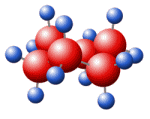



 details
details details
details details
details
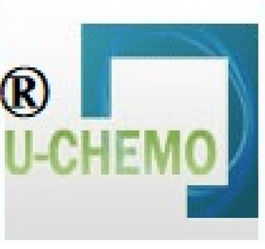

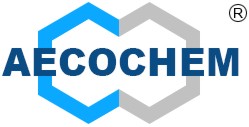
_Co_Ltd_1_575.jpg)



